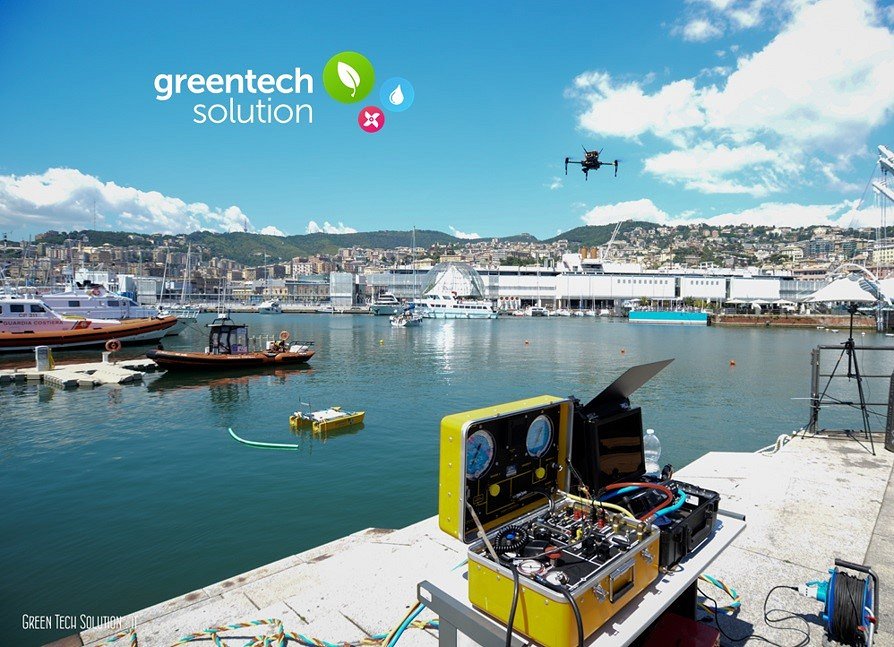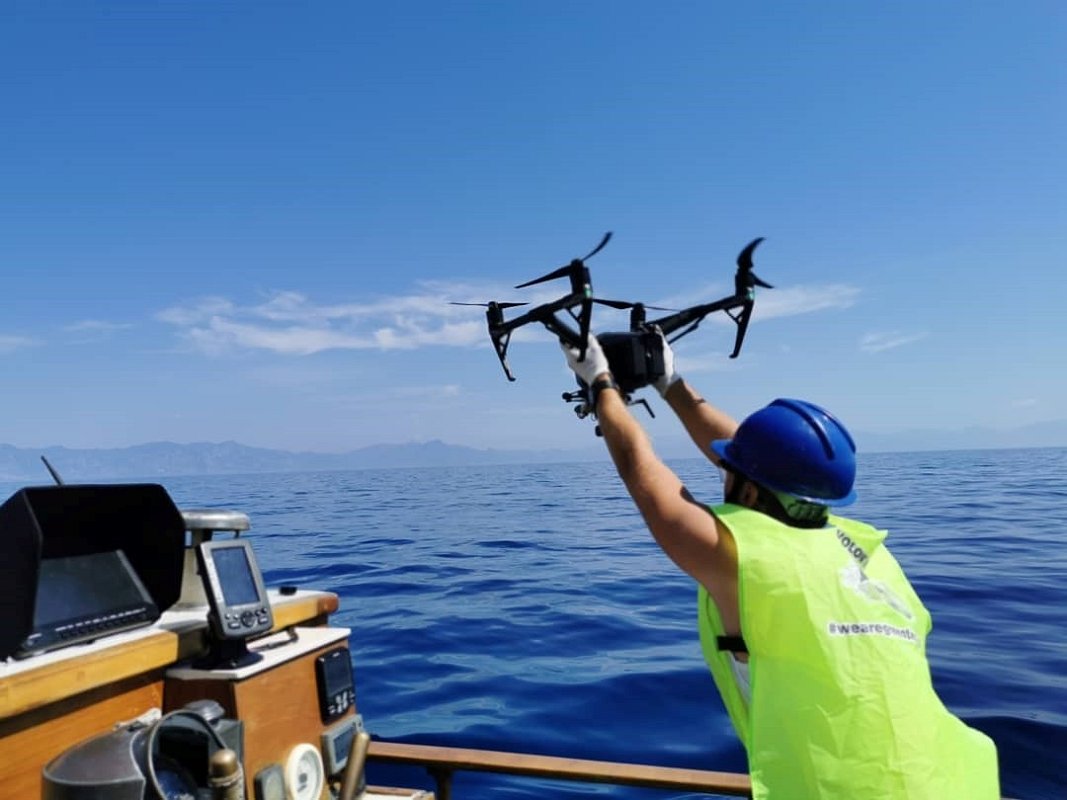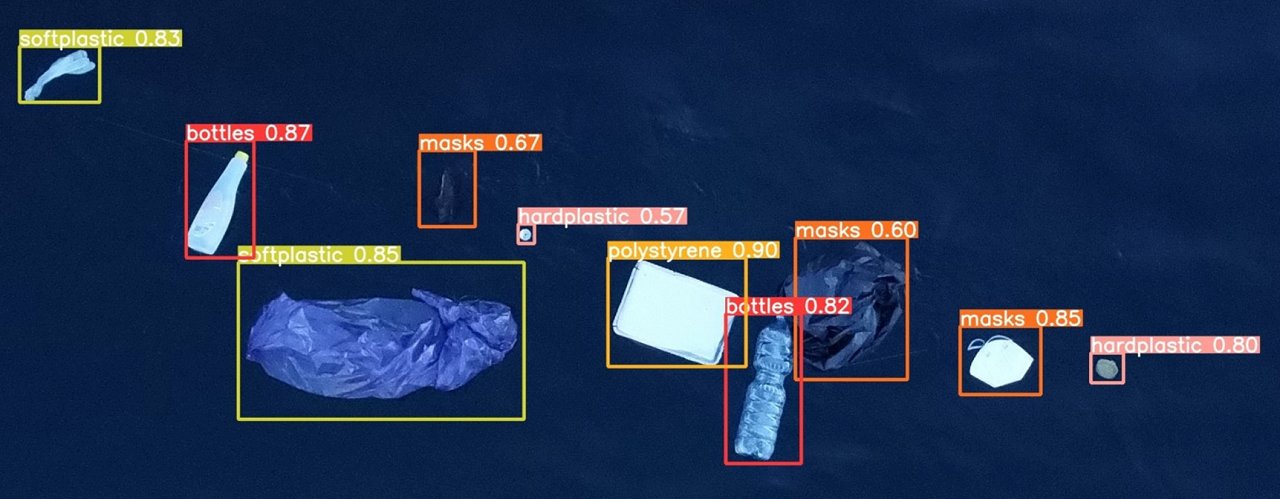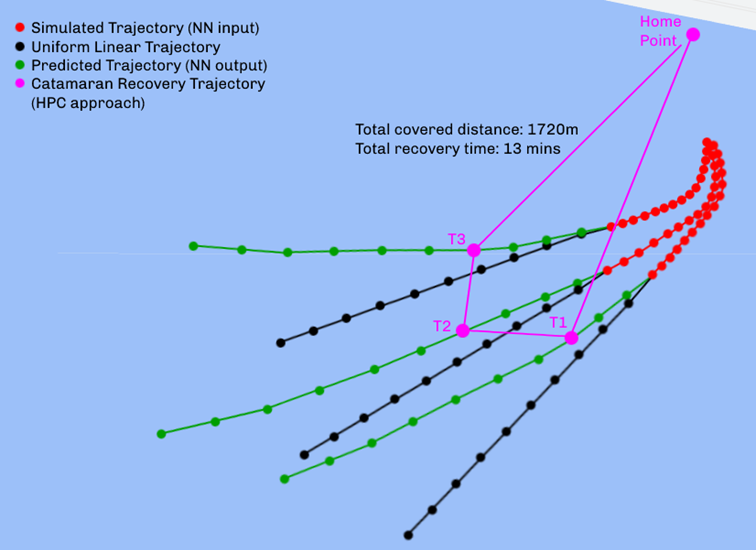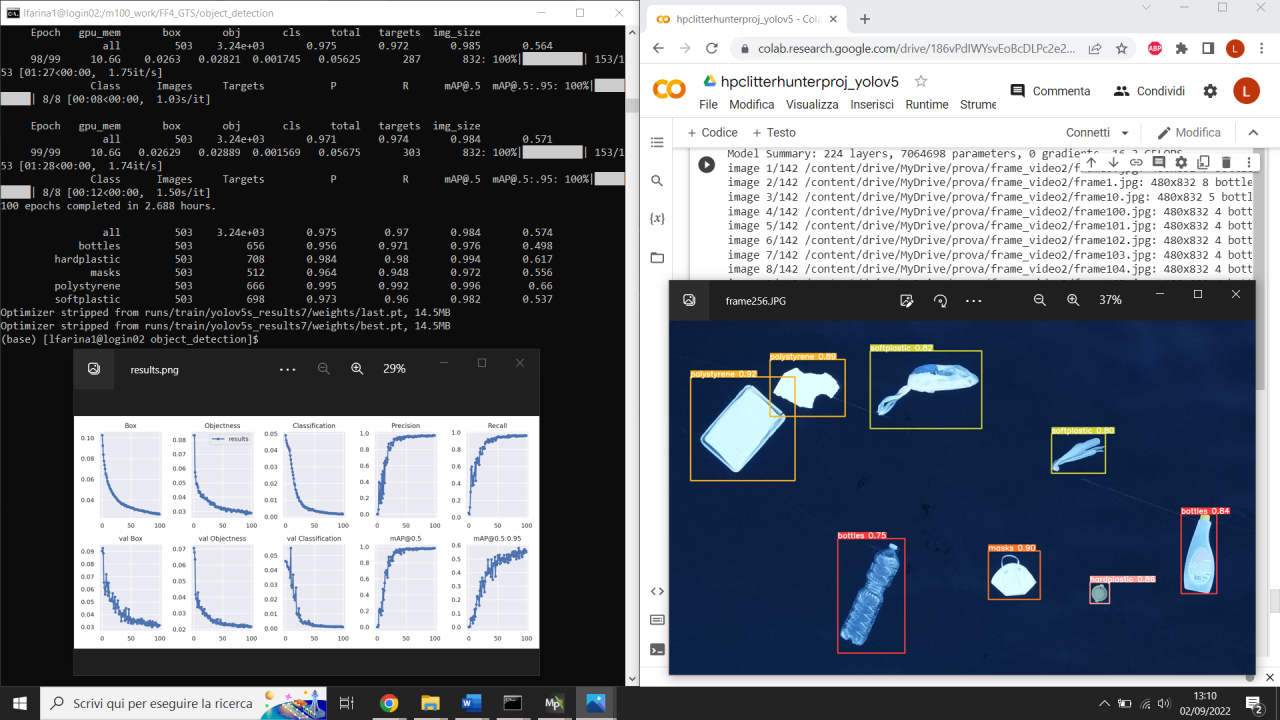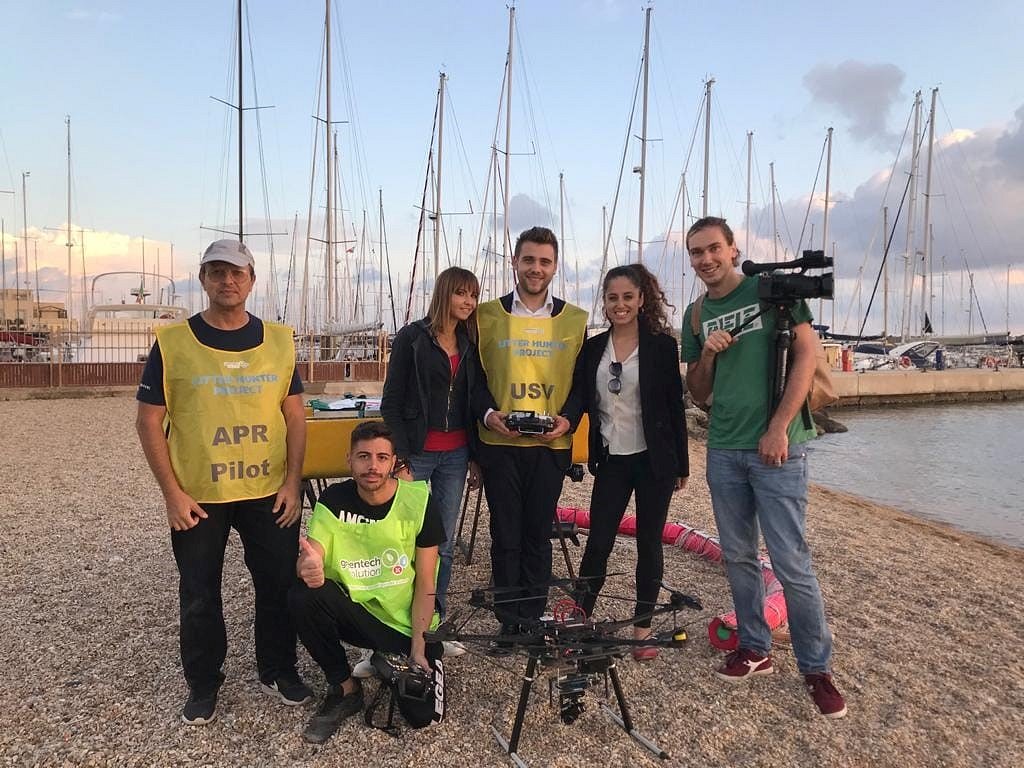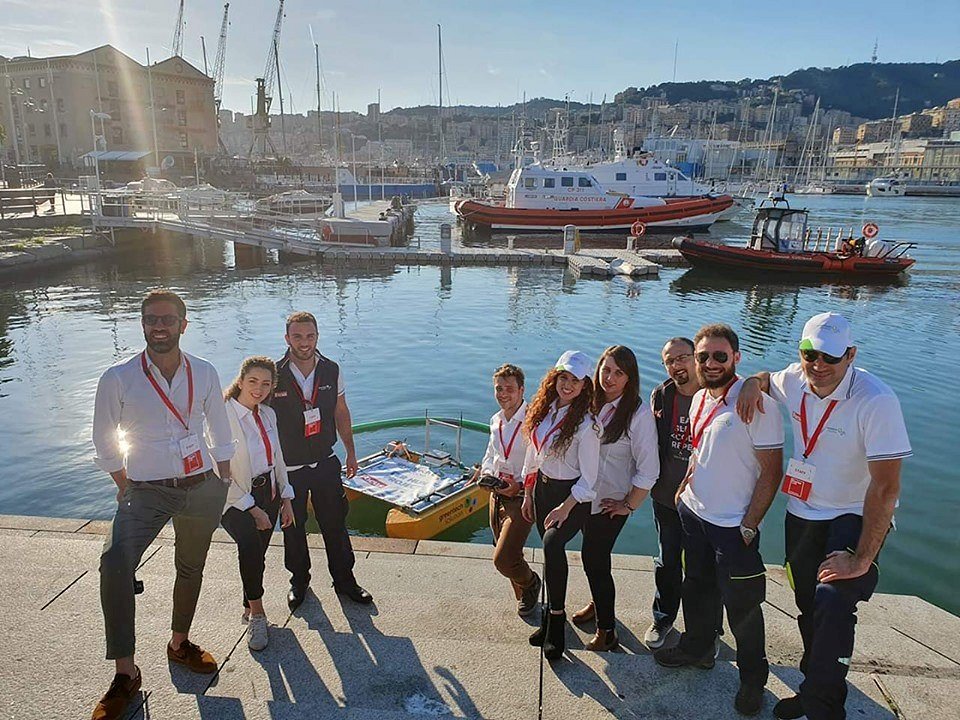HPC-Based Navigation System for Marine Litter Hunting
Protecting seas and oceans against the litter is becoming a global concern and there is a growing need worldwide for more efficient, clean and autonomous technologies to identify and collect marine detritus, especially plastics, in a systematic and repetitive way. GTS is an agile and innovative start-up that operates in the field of environmental protection and blue growth economy. The use of HPC makes it possible to tackle a computational problem that GTS met during its service for recovery plastic litter in sea: optimizing the plastic litter recovery strategy forecasting the position of hundreds of detritus floating in the sea with suitable accuracy in space and time.
SECTOR: Environment
TECHNOLOGY USED: HPC
COUNTRY: Italy
The challenge
Marine litter is a problem for the planet, as it damages the environment and generates negative economic, health, and environmental impacts. The most widespread, harmful, and persistent type of litter is plastic, which accounts for more than 80% of the litter found in the marine environment, threatening the livelihoods of more than 2 billion people and harming sectors such as aquaculture, fisheries, tourism, and marine wildlife.
Green Tech Solution set out to automate the collection of marine litter by integrating Neural Networks and Deep Learning logic into its existing approach. The existing solution consisted of the use of an Unmanned Aerial Vehicle (UAV) to monitor the litter. After the litter detection, a very simple algorithm (relying on a simplified uniform and rectilinear motion of the litter) was used to predict the speed and direction of the litter with a spatial accuracy of 20-30 metres and a temporal accuracy of 3-5 minutes. Because of this inaccuracy, this approach forced the UAV to remain close to the litter before its collection by a catamaran to monitor any possible changes in its position. Furthermore, the existing recovery strategy only focussed on one piece of litter at a time: after the identification of one litter object, this was recovered by a catamaran independently of the other litter objects and their trajectories. This led to long recovery paths and times for the catamaran. Hence, the main aim of the experiment was to improve the prediction of the litter’s trajectories (temporal accuracy and spatial position) and to generate an optimal recovery path for the catamaran, considering the trajectories of all nearby litter objects.
The solution
The experiment aimed to overcome the initial service’s weaknesses of poor prediction of marine litter trajectories by introducing a new HPC-based approach: Litter Hunter.
Litter Hunter is able to predict the litter’s various trajectories and thus calculate an optimised recovery trajectory in time and space, through the use of two neural networks and a newly developed multi-objective algorithm. The first neural network acquires the aerial images of waste objects (litter) as input, identifies their position, and classifies them in terms of size, materials (PET, PPT, biological) and buoyancy level. A second neural network acquires the trajectories of the observed litter (for a total of 60 minutes of observation) as input and outputs the predicted trajectories of these objects (for up to 100 minutes) by combining this information with meteorological and oceanographic data. Finally, a multi-objective algorithm uses the predicted trajectories to compute the 'best' trajectory (path) to be followed by the catamaran to collect the most litter while minimising recovery time and distance, based on a variety of known constraints such as catamaran battery range and cruising speed or legislative constraints.
Litter Hunter also allows larger marine areas to be monitored in a shorter time, enabling the company to reduce operational and management costs.
Business impact
The FF4EuroHPC experiment is expected to have a strong impact on the profitability of GTS by offering a higher level of efficiency and autonomy at a reduced price, simultaneously improving profits on sales.
The service now allows an area of 1 km2 to be covered in a single operation and about 100-200 pieces of waste to be collected. Furthermore, as the neural networks improve over the years due to Reinforcement Learning, the system is estimated to allow up to 1,000 floating objects (>25 mm) to be automatically collected per km2 of the area in a single day of operations (an expected achievement for 2025).
The following are the main identified guidelines of the business strategy of HPC-Based Litter Hunter:
- 4 sales packages (duration min. 1 month / max. 6 months) designed to optimize the cost per contact with the customer (e.g., a multi-month package reduces logistical costs compared to a one-month package).
- Focussing on the investment in drones and boat systems in the 3rd year (reaching 25 available systems) will increase the commercial activity.
- Optimization of the services, prices, and fleet management cost will generate a different value proposition in comparison to potential competitors: GTS offers better performance (in terms of object recognition, trajectory prediction and recovery strategy) with lower costs (operational and maintenance).
Social impact
Maritime municipalities will reduce their cleaning costs by up to 80% using the GTS HPC-based approach.
In the medium term, municipalities will benefit from a platform to predict floating waste on a local scale and improve their environmental planning.
The Litter Hunter system will reduce working hours (human resources) for litter collection.
Environmental impact
The new HPC-Based service will enable the recovery of tonnes of plastic (or other materials) from the sea for recycling. Continued action over time will enable the redevelopment of areas heavily affected by plastic pollution.
Benefits
- Improving the sustainability of GTS.
- An estimated 60% reduction in energy consumption of vehicle batteries used per km2 of operation.
- A reduction of 80% in time-to-planning (ca. 3 hours vs ca. 30 minutes per mission), 50% in time-to-recovery (30 minutes vs 15 minutes ca. per mission) and 40% in maintenance costs (€10,000 /year vs €6,000 /year).
- A price for services of €2,000-3,000 per km of road (main competitors are around €7,000).
- Market expansion outside Italy, reaching 2,000 km of EU coastline served (Greece, Spain and Norway) in the next 5-6 years.
Organisations involved:
End User: Green Tech Solution SRL
Domain Experts: Università degli Studi di Napoli Parthenope and BI-REX - Big Data Innovation & Research Excellence
HPC Provider: CINECA
Partners CINECA and BI-REX are part of the NCC Italy.


